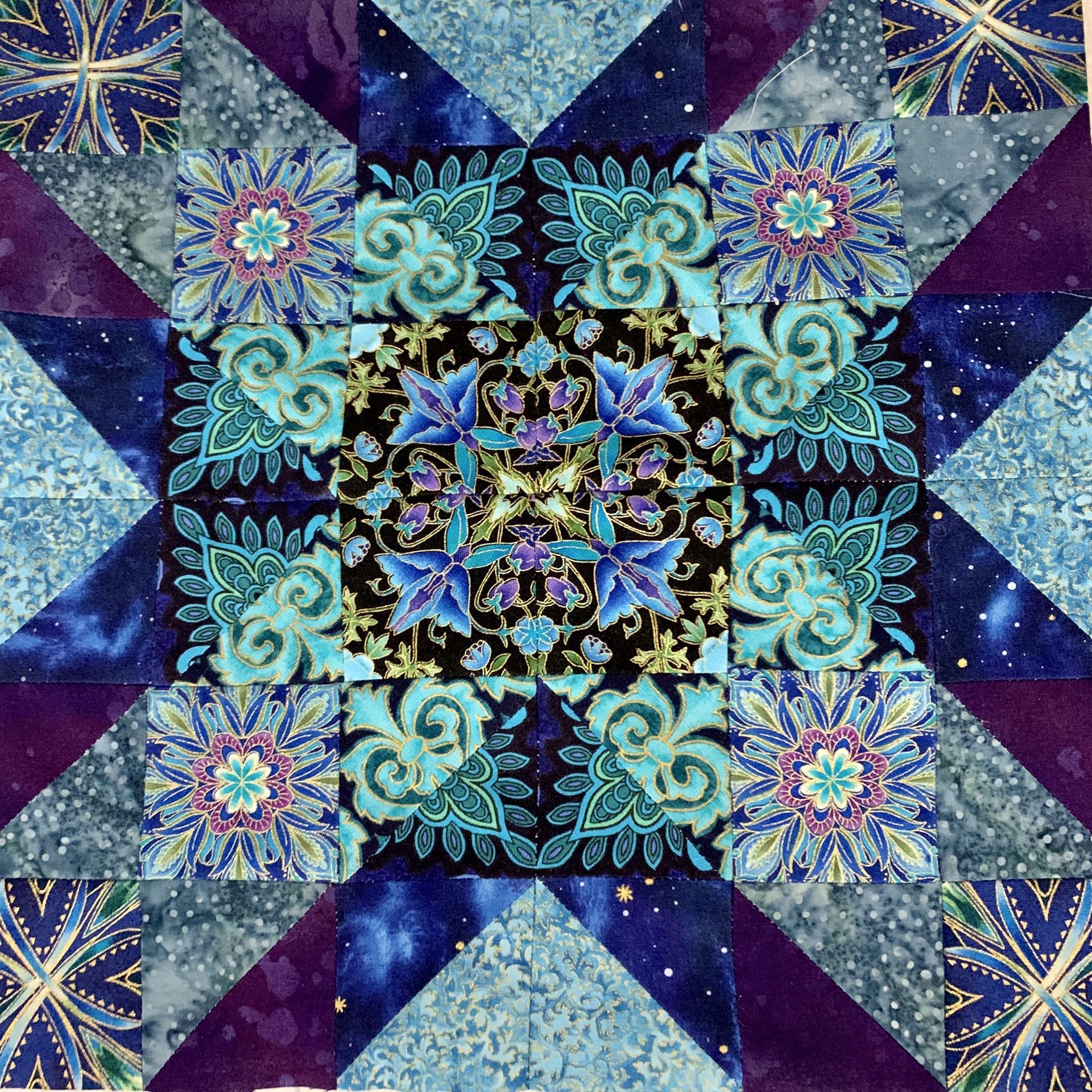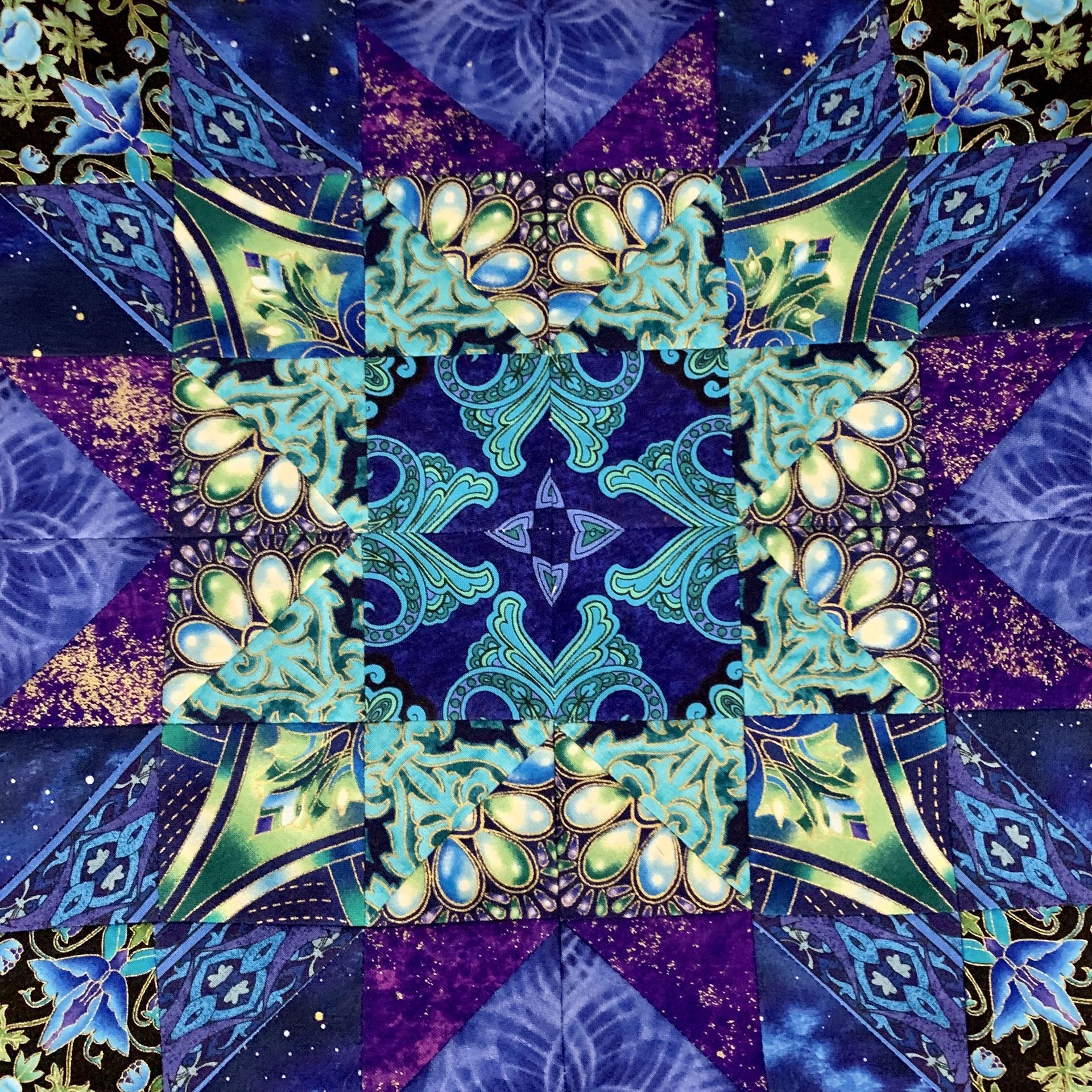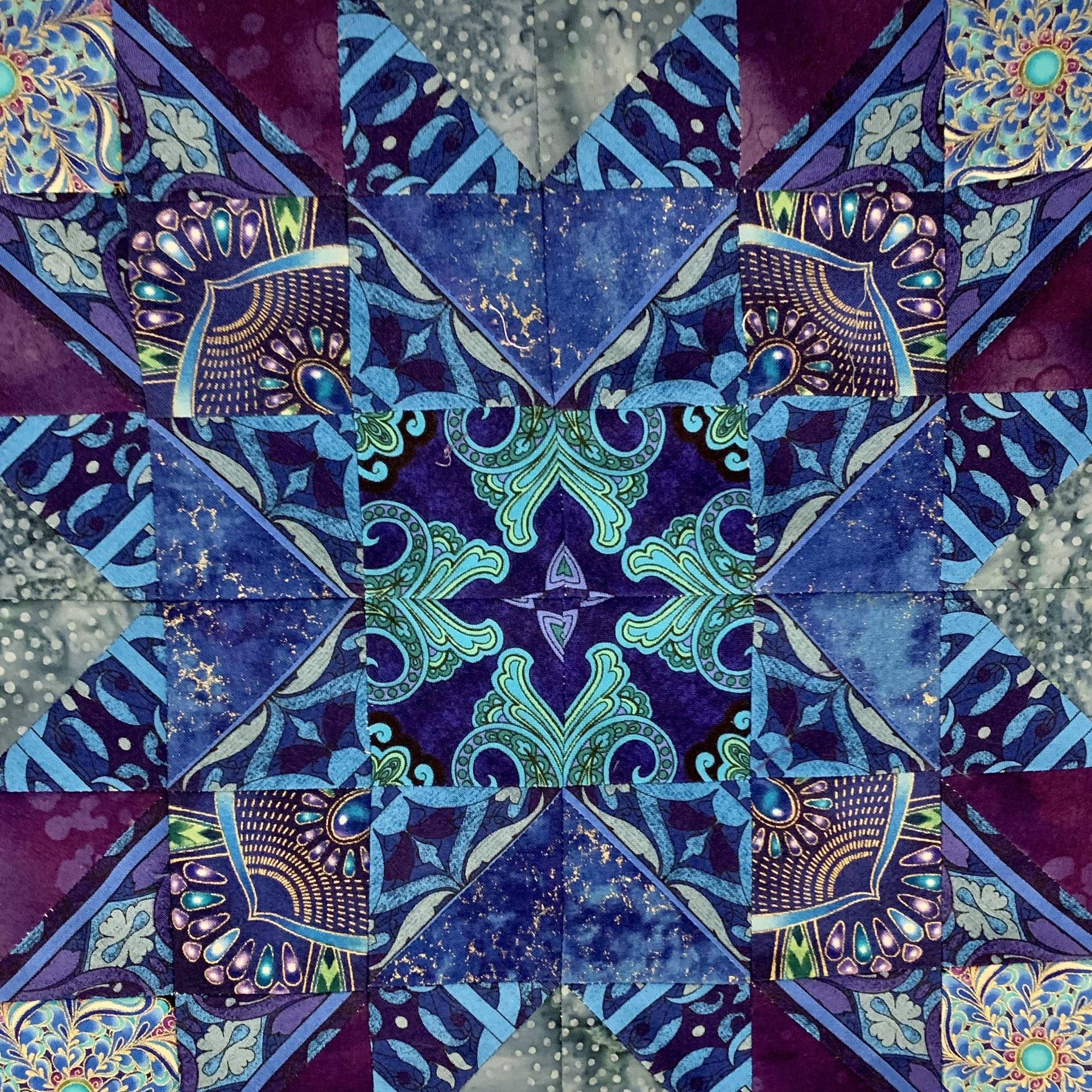We had one of those super fun, relaxing zoom times. Once you become habituated to Zoom, it becomes less distracting to the conversation. Quilting, knitting, old timey medicinal remedies were on our minds, if not before, then after our handwork circle!
We first discussed quilting a bit, since I am in the middle of making a full size quilt for my granddaughter. I want to show you some one of the beautiful squares (if I say so myself) that I made by hand dyeing using shibori and ice dyeing together. "I was gonna" photograph them individually before sewing together, but forgot. This photo was made when they were stacked up and so some of the leaf pattern from the square underneath shows through to the top.

I had many questions for the group about quilt-as-you-go since I can't face putting the whole quilt top, batting, and reverse pieces together before quilting. Although that might do for winter time, in summer it is way too hot to have all of that cloth on your lap! Although there are lots of versions of quilt-as-you-go on the internet, Judi mentioned that Georgia Bonesteel is credited with inventing it publishing an early book with details, "Lap Quilting" in 1987.
Looking her up on the internet, I discovered that she moved to Flat Rock in Henderson County in 1972 (according to Wikipedia). She has been a president of the International Quilt Association and was the first president of the Western North Carolina Quilters Guild. She has extensive quilting credentials and much teaching experience including a regular quilting show on PBS. She even continues to write an up-to-date blog at age 84. I plan to watch some of her videos on her website and learn more about her fame for lap quilting.
I also received more helpful info on preferred spray basting products for quilting (504 Spray Baste, but I think is officially 505 Adhesive Spray from Odif). We discussed quilting using smaller frames, as in quilting a large piece while sitting on your sofa. In addition to embroidery circles, you can make or buy more sturdy frames made from PVC piping--Q snap quilting frames. These can be floor standing or of various sizes for the lap quilting. Paula demonstrated one for us live!
Paula is working on an entry for a quilting competition and gave us a confidential peak of her partially finished piece. Very beautiful. Katya is also quilting and we had a peak of her first few pieces some weeks ago. She is up to 8 completed now including these three squares.



Katya is going wild with the square arrangements within each square panel!
Speaking of wild, Katya and Judy (with a y not i) were both motorcycle riders in their day! Never pigeonhole quilters, knitters, and sewists as dull!
Several of us were knitting. Judy showed us her completed Scandanavian pattern swan knit hat in blue and white, complete with tassel. Amazing! She has moved on to working on a Tam with a lovely intricate pattern. The secret in making a Tam that won't slide around or be lose fitting is to use needles several sizes smaller than those for the body of the hat so that the ribbing and brim are tight enough. By the way, Judy mentioned that KnitPicks.com is a great place to get reasonably priced yarn on-line. Paula brought up entrelac as being great for making hats. Entrelac looks woven even though it is knitted. I had trouble visualizing that, so in case you do too, a google search for entrelac knitting brings up many examples. It is fascinating to look at because your first reaction is that it looks woven and how the heck is that done? Of course done in many colors, the changes have to be numerous and time consuming. Judi mentioned that Noro yarn has long color changes and that gives the illusion of many color changes in entrelac knitting. Cool!
Some old timey medicine from Judy (an RN) and Sebette (trained in wilderness first aid).
*If you are bitten by a spider such as a brown recluse with venom, then you will want cotton balls and turpentine to draw out the venom. Judy has had personal experience. No ice, let the welt swell up so that the spot where the bite occurs is obvious. Brown recluse bites (they live in wood piles) in about 24 hours get a central necrotic spot (dead skin) in the middle of the welt. Apply turpentine on cotton balls.
Turpentine is derived from black pitch (pine pitch) and is a distillate with the same powers to draw out venom as the old time remedy of pine pitch.
*If you are bitten by a hornet/wasp and begin to show symptoms such as itchy rash, swelling, and difficulty breathing, break open two capsules of Benadryl and apply under the tongue for quick absorption into the blood (Judy, RN). Another approach is to cut the top off of a gel cap and apply the liquid Benedryl to the hornet/wasp bite. Of course if you already have an EpiPen, then use that!
Fun fact: "too poor to have a pot to piss in" derives from the indigo industry which uses ammonia as a mordent for dyeing, and tanneries that used it for tanning hides. At the time when ammonia wasn't available commercially, it was available in human urine. The poor would collect their urine in pots to sell to indigo dyers. The extremely poor couldn't afford a pot to piss in. Or, one could say they were "piss poor".
